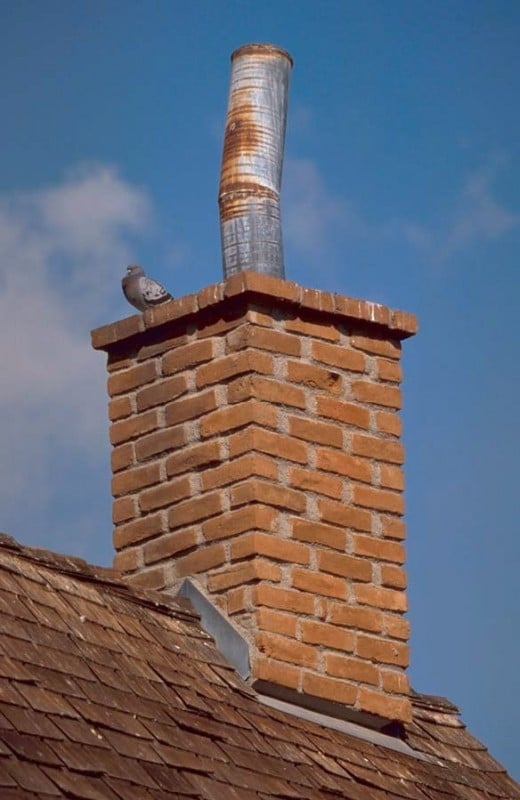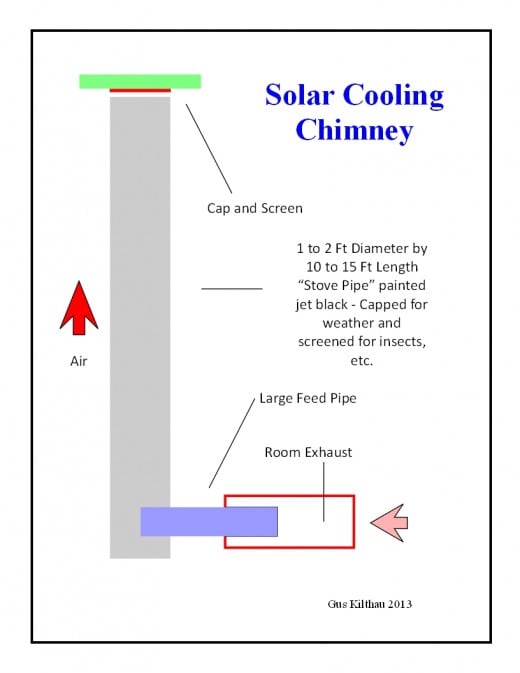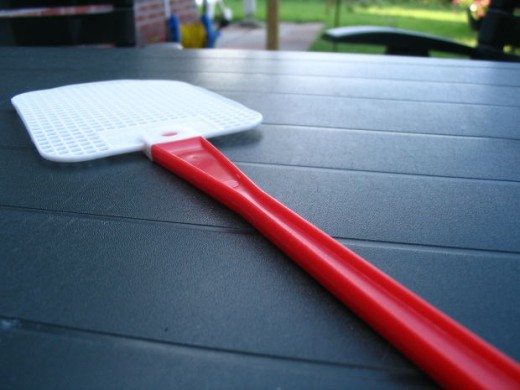Keep cool with cost-free solar power

Old Sol will try to fry your hide
That old sun beats down on your house and really “does a number” on your electricity bill. Where I live, summertime is thought to be relatively cool whenever the midday temperature does not go over 95 degrees in the shade. Some areas boast of even higher temperatures. People want to do something to gain relief from that sort of heat – so they twist the air conditioning thermostat dial downward. That, of course, results in their electricity bills heading upward.
Cool costs
At our place, we try to leave the thermostat dial alone, using the air conditioner as sparingly as we can. We understand that paying for those increased electricity bills requires us to sweat more working to get the money with which to pay them. So we turn on some fans to move the room air around as much as we can, thereby feeling cooler with having saved a bit of gold and also in fact. Moving air cools the body a lot more than does non-moving air.
As the sun beats down on the house, the temperature inside rises above that of outside air overall. It would be helpful to get some of that outside air inside, wouldn't it? Once inside, moving that fresher air around and then back to the outside once more would give us at least a small advantage over what would otherwise become too much heat in the house.

You could plug in a fan, but...
A simple device would be useful in moving cooler air in and exchanging it for hotter room air to be moved out. In the way of words, these devices are often referred to as solar chimneys. Air goes into the bottom of the solar chimney and exits through its top, just like smoke does in a fireplace or an industrial chimney. The power needed to move hot, unwanted air from the base of the chimney, through the chimney, and out of its top is, in the instance of the solar chimney, radiation from the sun.
Blowing up thermometers
It is startling to witness the amount of energy that can be visited upon things by sunlight. One time, some years ago, a friend and I were piddling around with a solar energy collector we had put together. It was built as a wood-framed enclosure that measured about three feet wide, four feet long, and six inches in depth. The inside was painted jet black. The broad side facing the sun was window glass. There was a small hole drilled into the box for placement of a tall industrial thermometer, the kind that used a column of mercury to indicate the temperatures reached in testing. In went the thermometer. Then we put the solar collector box into the bright sunshine of the day. At the ten-minute mark, the thermometer, with a top reading potential of 500 degrees, Fahrenheit, blew up – destroying itself and telling us that sunlight hitting the black inside of our box produced oven-type heat beyond our earlier guesstimates.
Kinda like Goldilocks – Not too hot, but just about right
The solar chimney is an open solar energy collector. It will not become super-heated. However, it will get very hot, both inside and outside. This will heat the air inside the chimney to the degree that the air will rush to the top – but, in order to move like that, the air will have to be replaced as it moves up the chimney. In other words, just as in fireplace and industrial chimneys, there must be a “draft.”
Drafts do more than just supply soldiers for the Army
If that replacement air can be supplied from a room in the house, then it will be hot house air that will be the source. As that unwanted room air leaves the room to make the solar chimney happy and workable, hopefully cooler air will enter the room from the outside. It is always possible that this “cooler air” may not really be cooler than the room air it is replacing, but even then, it will be moving air. The hotter the chimney becomes, the faster the air in the room will move, always trying its best to get to the solar chimney for a sun-sponsored free ride up into the heavens above.

Make your own solar chimney
You need a large pipe of some sort for the solar chimney part. Round pipe, such as a stove pipe would work. It should be a foot or two in diameter and probably about 10 to 15 feet in length, and thick enough to be able to stand vertically without crumpling. It should be painted jet black with non-glossy paint, thus being able to better absorb sun radiation, reflecting as little of that as possible. If you believe that super-heat inside the chimney would better suit your needs, you could get carried away somewhat more by making a clear plastic envelope around the chimney that better traps the sun's heat onto the black-painted chimney pipe.
At the bottom of the chimney would be a large diameter pipe of some workable material that serves as the air input port to the chimney. A duct of either fixed or flexible material would be attached to the air input pipe, leading from a partially open window of the room to be cooled. When that window is opened and its output duct thereby actuated, air will leave the room toward the solar chimney provided that the chimney is appropriately heated. This pulls new air into the room, cooling it – or at the least, moving the room air so as to provide some cooling to room occupants.
It would not be the worst of all ideas to keep rain, leaves, bugs, birds, and critters out of your chimney, however even that is not vital to its working well. For this, some sort of mesh screening is fastened to the top of the chimney and a cap, separated from the top by enough space so as to not slow down the flow of rising air, should be fastened above the open top of the chimney, too.

Comparing these little chimneys to whole-house chimneys
This simple gadget is easy to put together. The big kid in the family is the solar chimney attached to the house, going up into the air perhaps 30 feet or more. Surrounded for much of its length by a sturdy plastic envelope, big solar chimneys like those are used to change room air throughout an entire building. The air pulled from the building leaves near the top of the building, with fresh air entering somewhere close to building bottom. Air movement in chimneys like those can be great enough to think of installing electrical generation turbines inside the chimney pipes. Additionally, ducting could be placed deep in the ground surrounding a building such that incoming air could be pre-cooled by the constantly lower temperatures typically ten feet or so underground. Even in the height of summertime heating, underground temperature where I live is probably in the range of 55 to 65 degrees, Fahrenheit.
Dampness and insects could pose problems with such air input schemes, but that is often the kind of difficulty with which gadgeteering is tested. You get rid of one problem and another one meets you head on.
Ready, aim, fire – before you are fired upon
So, what I hope that this little article teaches is that, before you get all bent out of shape by the hot summer days to come, it might not be a bad idea to mess around with some solar stuff beforehand. Then, when the summer heat strikes, you might be ready to swat back at it.









